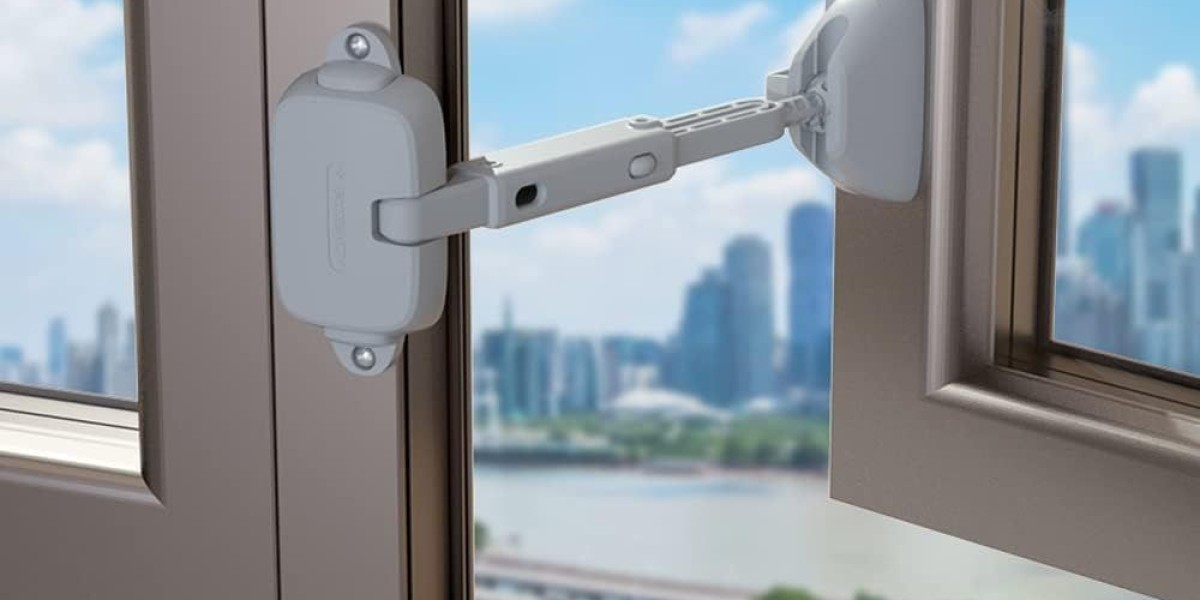However, they can also pose significant safety risks if not properly secured, especially in homes with children, elderly residents, or those living in high-rise buildings.
One effective way to enhance window safety without sacrificing functionality is by installing window restrictors. These devices limit how far a window can open, reducing the risk of falls while maintaining airflow and access. However, choosing the right restrictor for your home involves careful consideration of several factors, including window type, safety needs, material quality, and compliance with regulations.
Understanding Window Restrictors
A window restrictor is a mechanical device designed to control the opening of a window. It ensures that the window opens only to a safe, predetermined distance, typically a few inches, which is sufficient for ventilation but not wide enough for a child or pet to fall through.
Restrictors come in various forms, including sash locks, sliding arm restrictors, keyed restrictors, and friction hinges. Each type serves a slightly different purpose, and understanding these options is crucial in making an informed decision.
Why You Need a Window Restrictor
Safety is the primary reason homeowners install restrictors. Falls from windows are a leading cause of injury among children, with statistics showing that even a fall from a first-floor window can result in serious harm. In addition to child safety, windows are useful for:
Elderly Residents: Seniors are at risk of losing balance near open windows. Restrictors help prevent accidental falls.
Security: Certain restrictors can deter unauthorized entry, providing an additional layer of protection against intruders.
Ventilation Control: Restrictors allow windows to open safely for airflow without the fear of wide openings that compromise safety.
Compliance with Regulations: Many regions require restrictors in homes, especially in rental properties or buildings with children.
Types of Window Restrictors
Sash Locks: Common in older homes with sash windows, these locks allow the window to open only a few inches. They are simple to install and cost-effective, but may not suit all window types.
Sliding Arm Restrictors: These devices consist of a metal arm that extends across the window frame, limiting the opening. They are suitable for casement windows and provide robust security.
Keyed Restrictors: These restrictors require a key to open the window fully. They are ideal for families with children, as they prevent windows from being opened without adult supervision.
Friction Hinges: Often used in modern uPVC or aluminum windows, friction hinges limit the opening angle. They are discreet and maintain the aesthetic of the window while ensuring safety.
Child-Specific Restrictors: These are designed to meet strict safety standards for child safety. They often combine locking mechanisms with durable materials to prevent tampering.
Factors to Consider When Choosing a Window Restrictor
Choosing the right restrictor involves evaluating your home’s specific needs, the type of window, and the level of security required. Here are key factors to consider:
Window Type: The design and material of your window significantly influence which restrictor is suitable. Casement windows, sash windows, sliding windows, and tilt-and-turn windows all have different mechanisms, and using the wrong restrictor can lead to improper installation or damage.
Safety Requirements: Assess the level of risk in your home. For families with small children, keyed restrictors or child-specific devices are advisable. For general household use, friction hinges or sliding arm restrictors may suffice.
Material and Durability: Window should be made of high-quality, robust materials such as stainless steel or hardened aluminum. Cheaper materials can bend or break over time, compromising safety.
Ease of Use: Consider how easily the window can be operated with the restrictor installed. Some restrictors require a key or tool, which can be inconvenient for regular use but adds security. Others allow simple opening and closing while maintaining a limited gap.
Aesthetic Considerations: While safety is the priority, the restrictor should not detract from your home’s aesthetics. Modern restrictors are available in various finishes, including white, silver, and black, to blend seamlessly with window frames.
Regulatory Compliance: Ensure that the restrictor meets local building codes and safety standards. In many countries, there are strict regulations governing the installation of restrictors in homes with children. Non-compliance can result in fines or insurance issues.
Installation and Maintenance
Proper installation is critical for the effectiveness of a windows. While some devices are straightforward to install, others may require professional assistance, especially if the window frame is unusual or made of delicate materials. A poorly installed restrictor can fail under pressure, negating its safety benefits.
Maintenance is also important. Regularly inspect restrictors for signs of wear, rust, or loosening. Lubricate moving parts to ensure smooth operation and replace any damaged components immediately. For keyed restrictors, keep spare keys in a secure but accessible location.
Balancing Safety and Functionality
One of the challenges in selecting a restrictor is balancing safety with usability. Windows serve a practical purpose, providing light, ventilation, and access for cleaning. Overly restrictive devices can hinder these functions and frustrate household members. Therefore, it’s essential to select a restrictor that allows sufficient airflow while limiting the risk of accidents.
Professional Advice and Custom Solutions
In some cases, standard restrictors may not fit unusual window designs or meet specific safety requirements. Consulting a professional can provide tailored solutions that maximize safety without compromising functionality. Many window companies offer bespoke restrictors that fit precisely and blend with your home’s aesthetic.
Conclusion
Window restrictors are an effective way to enhance home safety, particularly for families with young children or elderly residents. They offer peace of mind by preventing falls, controlling ventilation, and adding an extra layer of security. However, choosing the right restrictor requires careful consideration of window type, safety needs, material quality, ease of use, and compliance with regulations.
Proper installation and ongoing maintenance are essential to ensure the restrictor performs as intended. By thoughtfully selecting and maintaining the right restrictor, homeowners can enjoy the benefits of natural light and fresh air without compromising safety, creating a secure and comfortable living environment.







